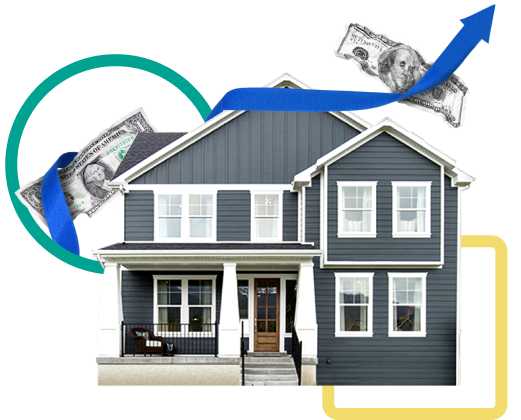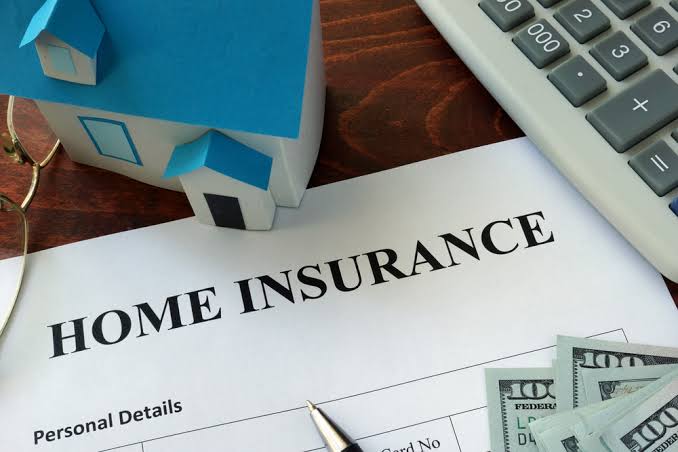Homeowners Insurance: What Does It Cover?
Mold? Windstorm damage? Flooding? Let’s be clear about what you are shielded from.
Beach read is not recommended for homeowners insurance plans. They frequently contain a ton of unclear terms and conditions. Because of this, many consumers are unaware of what their homeowners insurance policy does and does not cover.
We’ll provide a brief overview of homeowners insurance coverage in this post, covering everything from dog attacks to roof leaks and theft.
If you’re strapped for time, the helpful chart below offers a very general overview of the kinds of accidents that a homeowners insurance policy might cover.
In a nutshell, what does a typical homeowners insurance policy cover?
Six different categories of cover age are commonly included in homeowner’s insurance.
• Dwelling cover age (Coverage A) pertains to the physical structure of your home.
Other structures (Coverage B) cover things like your detached garage, driveway, fence, tool shed, pool, etc. Personal property protection (Coverage C) covers your personal property, such as your stereo, sunglasses, or sofa.
If your home becomes uninhabitable due to a specific peril like a fire or hurricane, Loss of Use (Coverage D) helps with additional living expenditures (like hotel bills).
• Personal liability protection (Coverage E) covers any harm you do to another person’s body or property, including their possessions. It makes no difference whether the harm occurs at your house or elsewhere.
• Medical payments (Coverage F) assist pay for medical expenses related to accidents or injuries visitors may have while at your property, often under $5,000.
What is a “peril”?
In a nutshell, a “peril” is anything that occurs, results in harm, and is covered by your policy. One important thing to keep in mind is: Most homeowners insurance policies won’t pay out for earthquake-related losses. You should consider getting separate earthquake insurance for that.
Coverage A and B are considered “open peril” at Lemonade. This means that, unless the cause is specifically excluded, your policy will cover your property against property damage.
“Named peril” is Coverage C. In other words, your policy covers your personal property against a list of around 16 items (or 15, depending on where you live).
As a general rule, pay special attention to the exclusions from coverage and the requirements you must meet in order to obtain coverage when reading your policy. Tom Waits once said, “The huge print giveth and the small print taketh away.” (We apologize, but that is the unfortunate situation in which attorneys have placed us all.)
Does homeowners insurance cover water damage?
It depends on the situation.
when water damage is covered
Water damage is typically covered by homeowners insurance if the source was unexpected and accidental.
For instance, if a pipe bursts and destroys all of the furniture in your living room, the damage to your couch, love seat, carpet, and other items would be covered.
Remember that certain water-related damage to your home’s structure and your personal property is covered by your insurance policy. This does not imply that the cause of the harm is covered.
Your insurance would cover the damages to your basement and any items you have stored there if your hot water tank explodes and leaks all over it; it wouldn’t cover the cost of replacing the hot water tank itself.
Nevertheless, you may upgrade your policy to include Equipment Breakdown Coverage (EBC), which can cover you against some home appliance breakdowns.
When water damage is not covered
When water damage results from: Homeowners insurance does not cover
• Maintenance problems (like a continuous leak)
• Water backup from an exterior drain or sewage system • Rot or corrosion
• A flood
Consider getting a second flood insurance policy through the National Flood Insurance Program if you want flood insurance. Uncertain of your risk level? See the flood map for your neighborhood. The National Flood Insurance Program of FEMA contains a useful Q&A section that provides additional information on floods.
Does homeowners insurance cover mold?
Again, it depends on the situation.
when mold is covered
Only if a specific peril, such as fire, lightning, ice, a burst pipe, etc., causes the mold, is it covered? In order to be covered, the mold must be buried in the ceilings, floors, or walls. If you’re concerned about mold, some plans provide mold coverage endorsements that might increase the coverage.
For instance, you are covered if your pipe bursts and the water that results causes mold to grow. The same holds true if an ice dam develops on your roof, allowing water to drip into your attic and enabling mold to grow.
Keep in mind that these circumstances are only covered if the harm is sudden and unintentional. Because of your own carelessness, if your pipes broke and you did nothing about it for a few weeks, the mold won’t be covered.
When mold is not covered
Not covered are situations in which mold develops gradually. That disgusting growth under your sink or in your shower? As the issue would be the result of negligence, it is not covered by your policy, so you should take care of it right away.
Does homeowners insurance cover roof leaks?
Guess what? The solution depends on the specifics of the leak! Here, we get into the specifics of roof leaks, although the highlights are provided below.
When leaks in the roof are covered
The general guideline is as follows: Roof leaks are covered when they are brought on by unexpected, unavoidable circumstances (does this sound familiar?). You are covered if your roof leaks as a result of falling trees, a windstorm, hail, vandalism, or the weight of ice, sleet, or snow.
Your policy would cover the damage from this sudden, unforeseen occurrence if a windstorm blew through town, lifting your roofing shingles and causing a leak inside your home.
By “cover,” we mean that your Lemonade house insurance will assist reimburse you for damages to both your home (the torn roof) and any personal belongings that was harmed as a result of the leak. Consult this page for further information about roof leaks and homeowners insurance.
Is tree damage covered by homeowners insurance?
Depending on what brought the tree down.
When tree-related damage is covered
Tree-related damage is covered if the cause is unexpected and inadvertent. Thus your Lemonade house insurance will pay up if a windstorm causes a healthy tree in your backyard to fall and demolish your storage shed.
Rest confident that your homeowners insurance policy will also cover you if a tree in your neighbor’s backyard collapses and causes damage to your own property.
What about tree removal?
We are often discussing coverage for your property brought on by a tree in the majority of the instances mentioned above. Hence, if a storm topples the tree onto your home, your policy would probably cover both the tree’s removal and the damage to the home.
But things get a little trickier if a windstorm topples a tree and the tree falls without harming anything in its path. In this scenario, neither the removal of the damaged tree nor the cost of a new tree would be covered by your homeowners insurance. Only if there were less risks involved would tree removal be covered here (which does include fire or lightning).
Does homeowners insurance cover theft?
Yes, your policy covers theft (also known as “the ol’ five-finger discount,” “pilfering,” “snatching,” and “purloining”).
when theft is covered
Theft inside and outside of your house is covered by homeowners insurance. Your Lemonade home insurance policy will therefore assist in making up for the loss if your phone is taken from a coffee shop or your bike is stolen from your garage.
Keep in mind that homeowners insurance covers both stolen property and structural damage to your home brought on by theft. So, you are covered if a burglar damages your doors, windows, or floors.
When theft is not covered
The first thing to note is that there is typically a $200 cap on the amount your insurance carrier will reimburse you for lost money. Reporting a stolen rucksack “laden with a few books and $300,000 in cash” won’t get you very far.
There is also a $1,500 sublimit for theft in the case of jewels. Think about buying Additional Coverage if you want to safeguard the full worth of your necklaces, rings, and gemstones.
Does homeowners insurance cover dog bites?
when dog bites are covered
If your dog bites someone inside or outside of your home, homeowner’s insurance typically covers you. Coverage E (Personal Liability) or Coverage F would apply to this situation (Medical Payments). If your dog harms other people or their property, your policy will also cover you (not your own).
When dog bites are not covered
Dog bite insurance does not cover the following three situations:
• Because you can’t file a claim against… yourself, your dog, Sir Grrrr, bites a person who is covered by your policy.
• Your puppy has a history of biting; • Your dog is considered to be at high risk.
Our policies at Lemonade are determined by national insurance statistics, which compels us to ban some breeds because of their potential to bite. Nothing personal here.
Does homeowners insurance cover termite damage?
In general, no.
Why? due to the fact that termites are typically seen as avoidable. Homeowners are typically aware of a termite infestation before they cause significant damage, so they don’t appear out of nowhere. A skilled inspector can swiftly determine whether you are dealing with these pests if you are unsure.
Does homeowners insurance cover roof repairs?
Sometimes. Let’s examine many scenarios.
When roof repairs are covered
Your Coverage A and Coverage B, which cover your home and any “additional structures” on your land, are “open peril” coverages, as we previously indicated. This implies that, unless the cause is something that is expressly excluded in your policy, you may submit a claim for any damages.
Save your receipts because temporary repairs to stop further damage are also covered.
When roof repairs are not covered
Age, mold, fungus, or damp rot, wear and tear or degradation, neglect, inadequate upkeep, vermin, rats, birds, or insects
And once more, if the damage is caused by an earthquake or flood, roof repair is not Get your roof checked every two years to prevent future problems.
Personal Liability Coverage: What’s the Deal?
Thus far, we’ve largely been discussing how your homeowners insurance policy safeguards your house against specific forms of harm. Nevertheless, your policy also has a crucial additional element: If you are held legally or financially liable for certain incidents that happen on your property or harm that you (unintentionally) cause to another person, Coverage E comes into play.
Coverage E is pertinent in the following context:
• You unintentionally damage someone else’s property or house; • Another person included on your policy—even your pet!—damages someone else.
If you are sued as a result of one of the aforementioned events and require legal representation, Coverage E may be able to assist with the cost of your defense. Injured parties’ medical expenses as well as actual property damage may also be covered by it.
Coverage E of your homeowners insurance policy will come in handy in the following situations.
•
When it’s your turn to host book club, one of your visitors fractures their leg during a contentious discussion about Eat, Prey, Love’s concluding chapter.
•
You’re so joyful and pleased at your friend’s baby shower that you don’t even notice the glass coffee table you’re going to enter, which quickly turns into a “pile of glass pieces on the floor.”
•
When your neighbor is jogging past your house, your Shiba Inu becomes frightened and attacks his ankle.
Remember that your Coverage E may not be applicable in certain situations. Here are a few examples:
• Your car caused the damage or injuries; in this case, your auto insurance would be responsible.
• You willfully injure yourself or another person’s property (violence is never the solution). Only injuries sustained by others are covered by Coverage E.
• You occasionally conduct business out of your house, and an injury, accident, or damage occurs as a result of that activity.
How do homeowners insurance deductibles operate?
When you buy an insurance policy, you can choose a deductible that will be deducted from any future claim settlements.
Consider a deductible as your contribution to the loss or damage. You’re saying, “My insurance company will cover the remaining X dollars for any claim on future losses or damages.”
You’ll be asked to select a deductible when you sign up for a homeowners insurance policy. They normally vary from $1,000 to $2,500 for a homeowners policy. Your contribution (the amount deducted from a claim) in the event that something occurs to your belongings is what you are deciding here.
This is how it actually functions in practice:
• When you purchased your policy, you selected a $1,000 deductible.
• You later submit a claim for a stolen couch worth $4,000
• Keep in mind that this is not an annual deductible that you must fulfill; it applies to each claim you submit. If the claim is approved, your insurer will pay you $3,000 ($4,000 minus your $1,000 deductible).
Deductibles are there to encourage you to take a little more care with your possessions and to keep policy costs down for everyone.
As a result, if your claim is approved but you find $1,000 “missing,” that was your contribution. The insurance company will cover the remaining costs after you pay the deductible.
How much does homeowners insurance cost?
According to Value Penguin, homeowners insurance costs an average of $1,680 yearly, or roughly $140 per month, but actual costs might vary significantly. Where you live, the state of your home, your deductible, and the level of coverage you select will all affect how much you pay for homeowners insurance.



